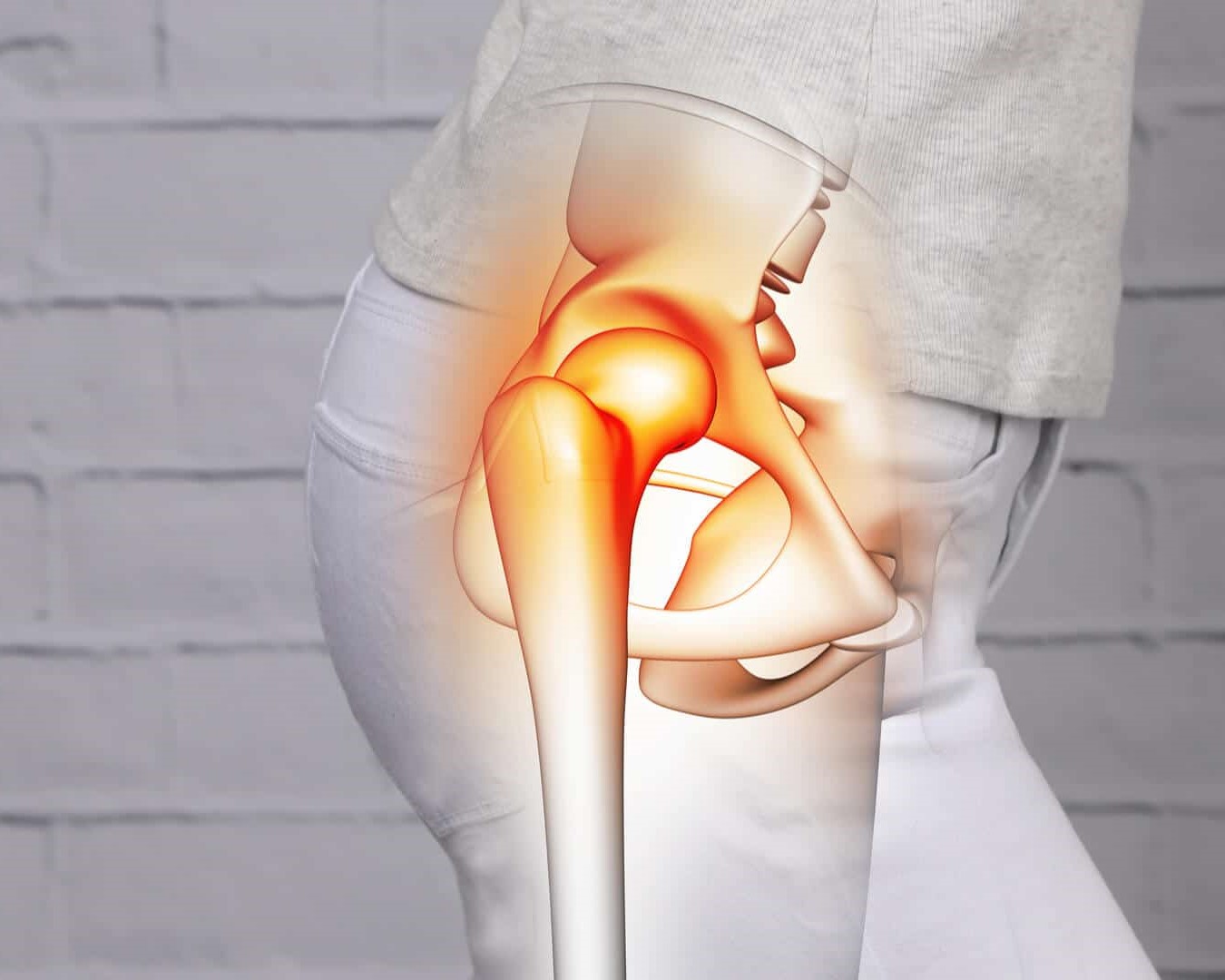
It is a ageing condition in which patient experiences chronic pain due to degeneration of cartilage(cushion between the two bones) present between the two bones. It is one of the leading cause of hip pain in elderly although it may present in young adults due to trauma. Due to loss of cartilage, friction between the two bones causes pain. Treatment depends on the grade of osteoarthritis and patients symptoms. Total hip replacement surgery is usually not done for patients with grade 1 and 2 osteoarthritis. Such patients when present with pain are treated with pain killers and other needle interventions. Joint injections are given to relive pain and aggressive exercises advised to strengthen the muscles.
Hip pain is usually accompanied with the following signs and symptoms:
Hip pain can be caused by various factors, and the underlying cause often determines the specific symptoms and appropriate treatment. Here are some common causes of hip pain:
AVN HIP -Avascular necrosis (AVN), also called osteonecrosis or bone infarction, is death of bone tissue due to interruption of the blood supply. Early on, there may be no symptoms. Gradually joint pain may develop, which may limit the person's ability to move. Complications may include collapse of the bone or nearby joint surface.
It is painful condition of buttocks and hip due to degeneration of pyriformis muscle . pyriformis is a small muscle which is attached from lower spine to femur and is present deep inside the big gluteal muscle of buttock. When there is a pyriformis muscle tear or degeneration it will irritate the sciatic nerve which passes beneath it leading to pain in the buttock, thigh and knee joint. Patient will usually complain of a tender point in the buttock, pain on sitting. This pain requires healing of the pyriformis muscle for complete pain relief. Pain killers, injection into the pyriformis muscle under the vision of ultrasonography is the best mode of pain relief and muscle healing. This treatment is then followed with anti-neuropathic drugs and aggressive excercises to strengthen the muscle.
PANAX is one of the first multidisciplinary pain management center offering comprehensive non surgical pain management services.
All our Treatment are:
Bursa are fluid filled sac present around the joint to prevent friction on sliding of the two bones. Inflammation of this bursa present on the trochanter part of femur bone around the hip joint due to trauma or oveuse can cause pain in the buttock, pain in hip movements, pain may also radiate to leg . This pain is usually seen on lying down on the affected side, climbing up stairs. Diagnosis is usually done by clinical examination and also by MRI of hip joint and ultrasonography. Treatment is done with anti inflammatory drugs, ice pack, rest. Mostly this conditions requires injection at the bursa to heal and subside the inflammation done under fluoroscopic or ultrasonography guidance. If the injection in the bursa subsides the pain, then the diagnosis of trochanteric bursitis is confirmed.
Iliopsoas is two muscles which are attached to anterior part of thigh. Beneath this muscle is the iliopsoas bursa. Inflammation of this bursa leads to iliopsoas bursitis which presents with pain in front part of hip joint , may or may not be associated with swelling. This is seen in patients with repitive use of muscles, trauma. Tender point will be present in the anterior part of groin. Diagnosis is usually done by clinical examination and also by MRI of hip joint and ultrasonography. Treatment is done with anti inflammatory drugs, ice pack, rest. Mostly this conditions requires injection at the bursa to heal and subside the inflammation done under fluoroscopic or ultrasonography guidance. If the injection in the bursa subsides the pain, then the diagnosis of iliopsaos bursitis is confirmed.
Physical examination – can establish the cause behind hip pain.
Range of motion – during flexion and extension
Test for Ligament injuries
Comparing the functioning of the to your healthy Hip.
Imaging tests, such as X-Rays, MRI Scan, CT Scan
Dynamic Ultrasound– This is the gold standard test to identify the pain generator and also the stage of arthritis and it is to be performed by a pain physician.